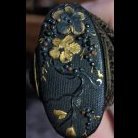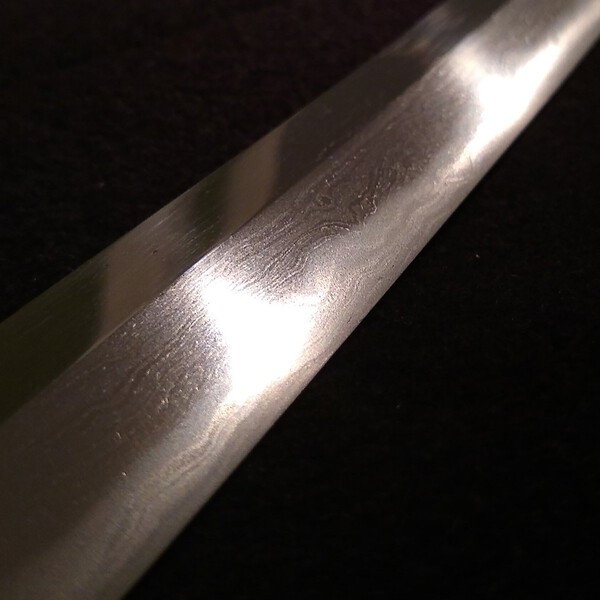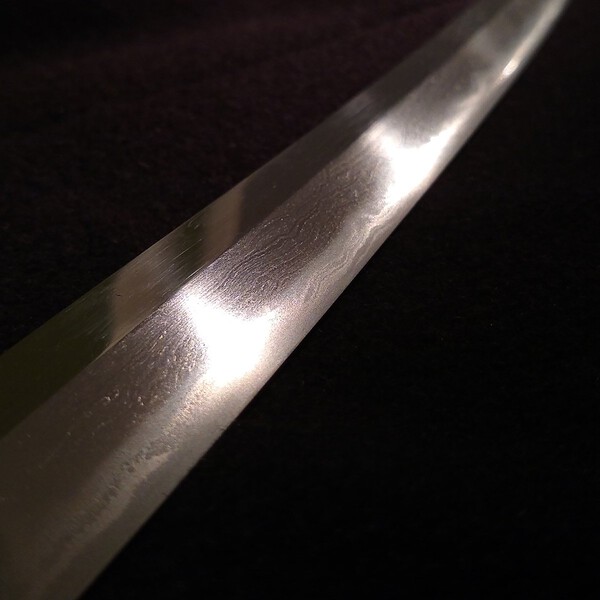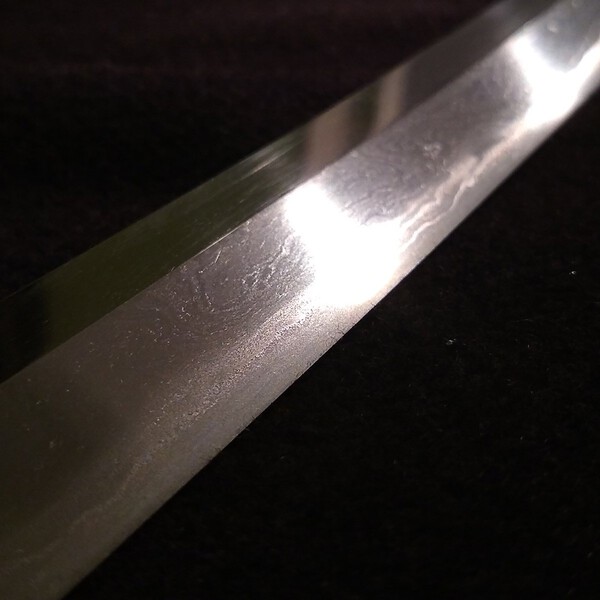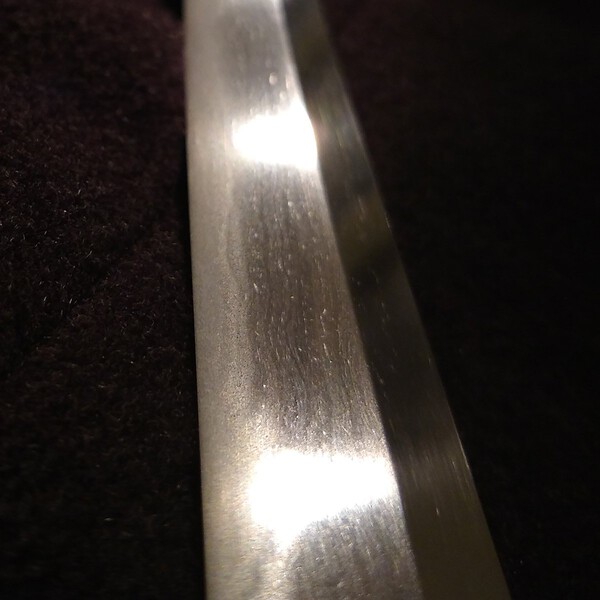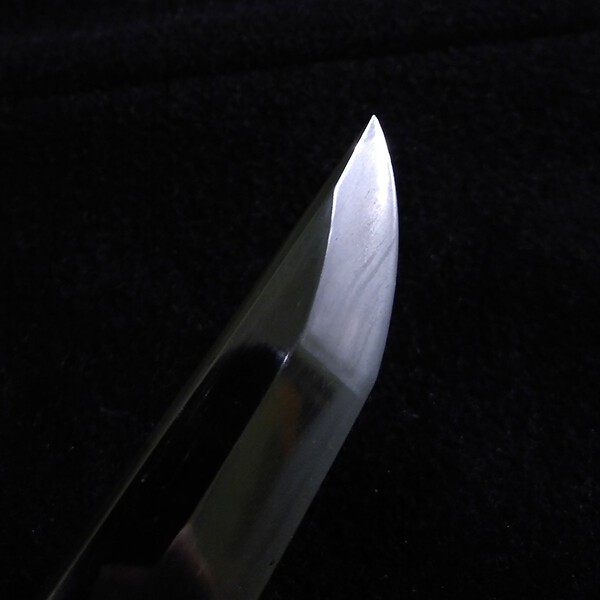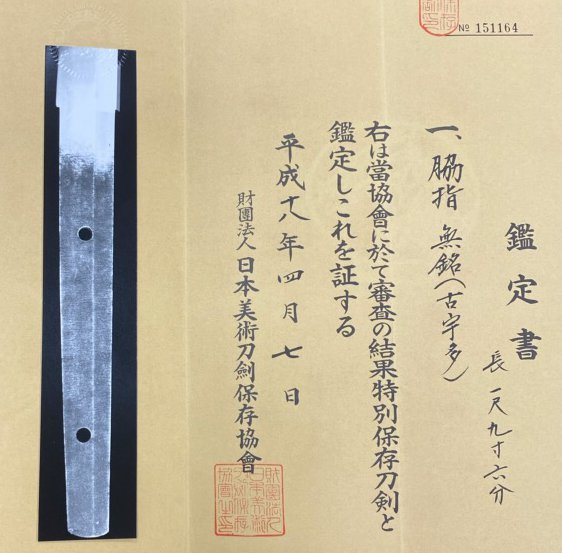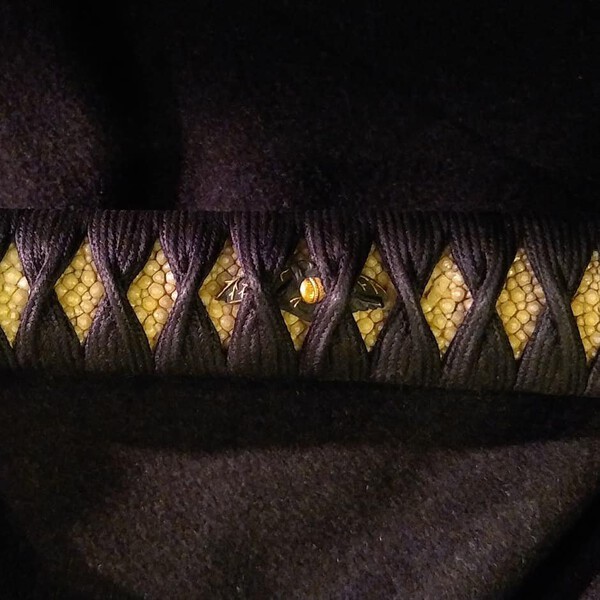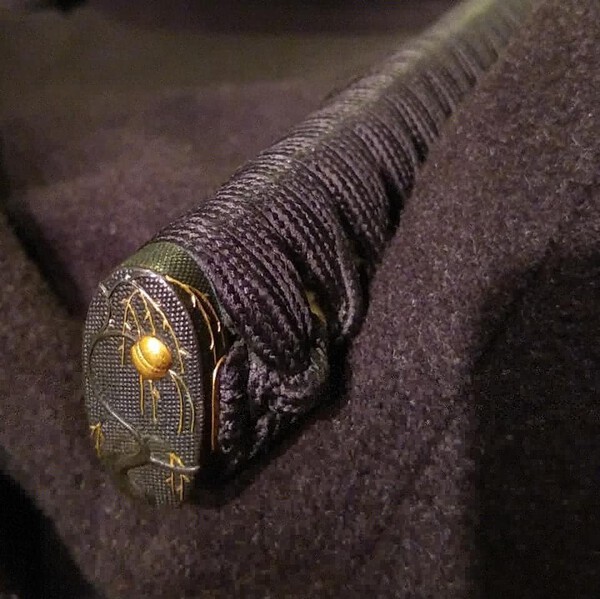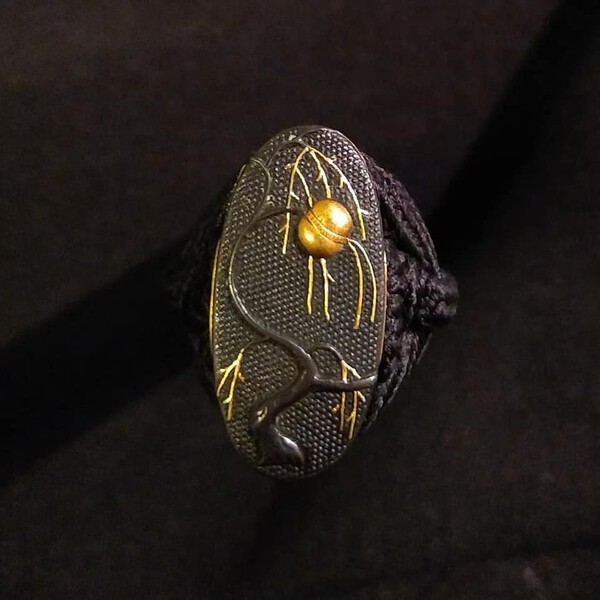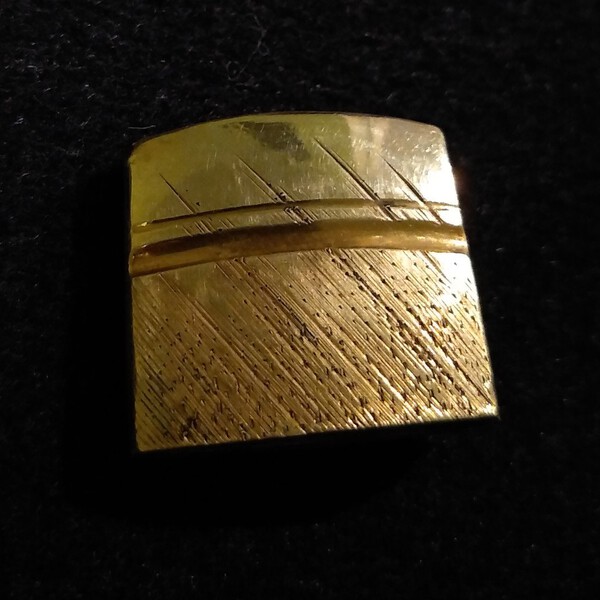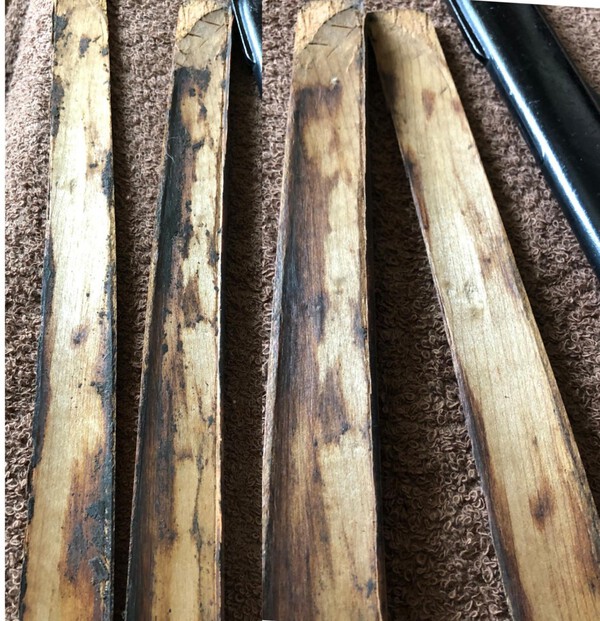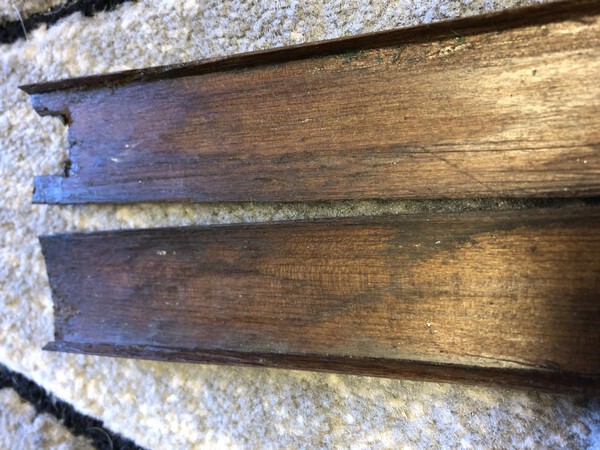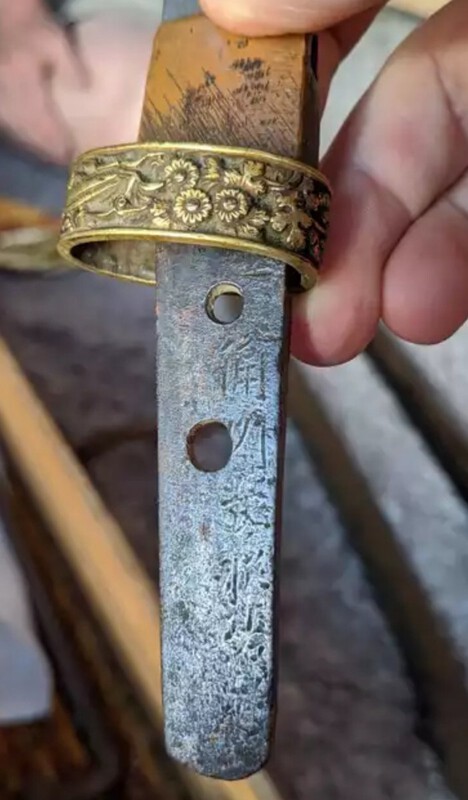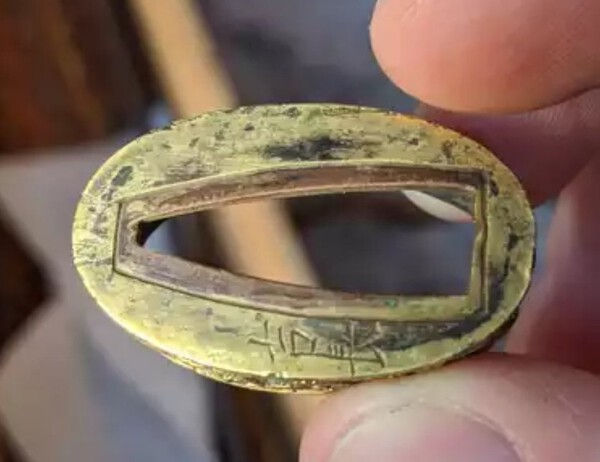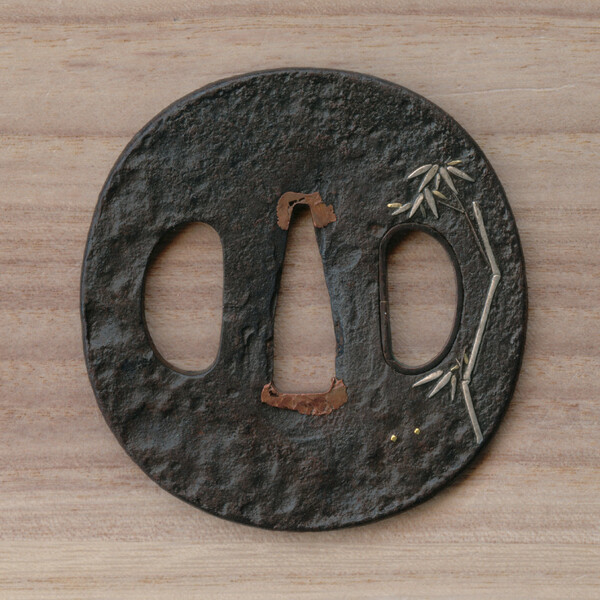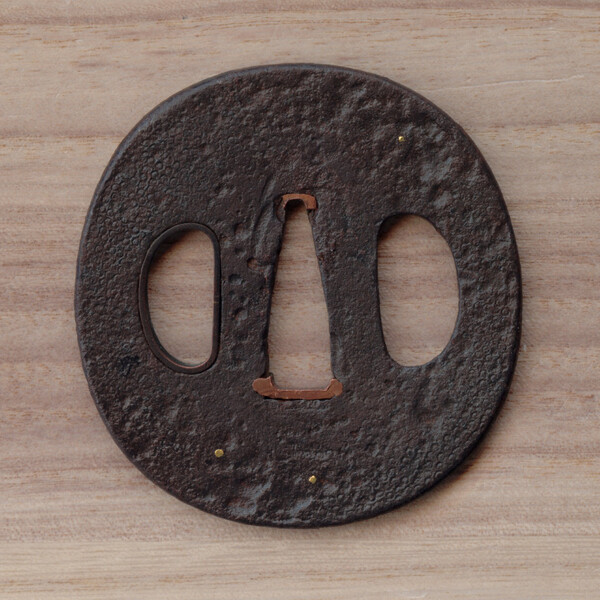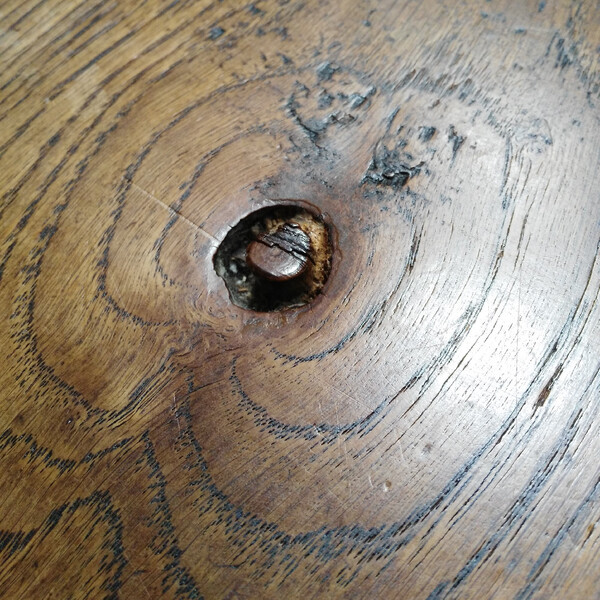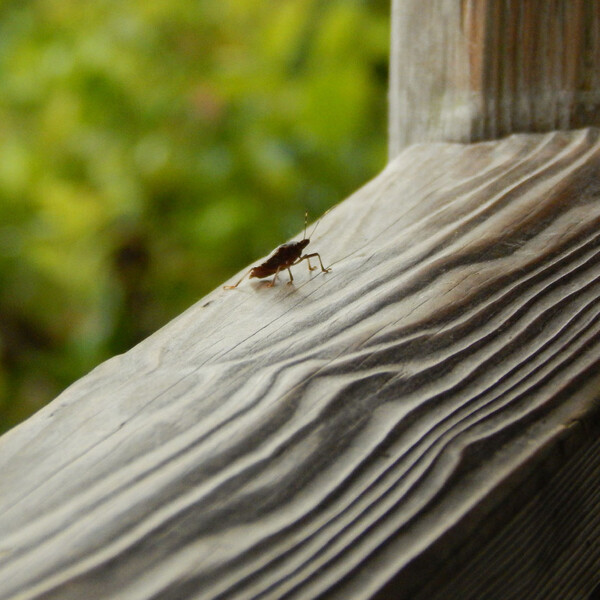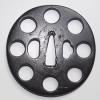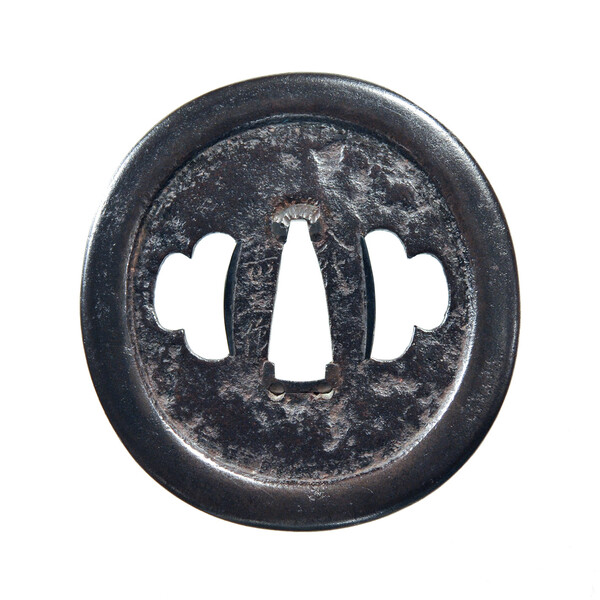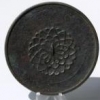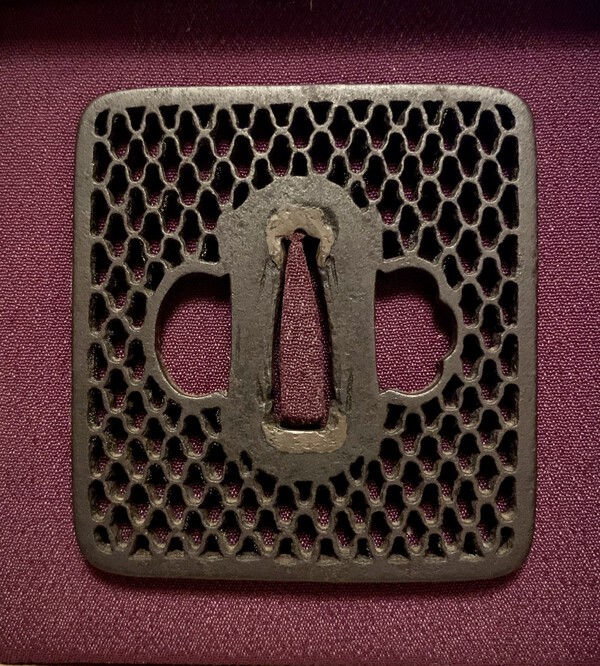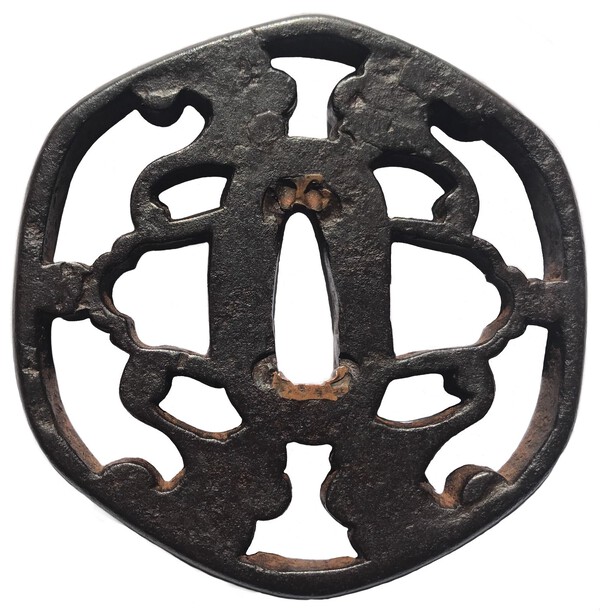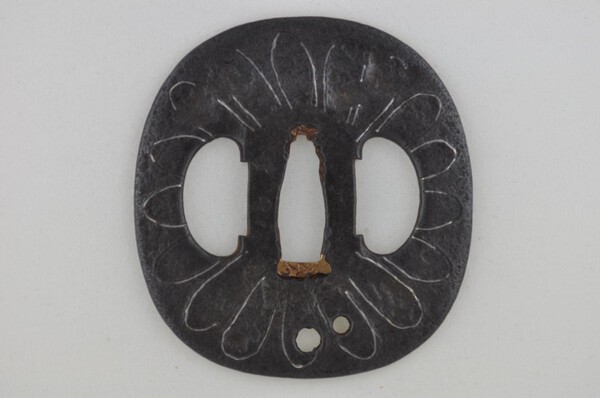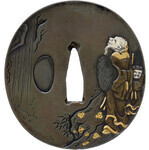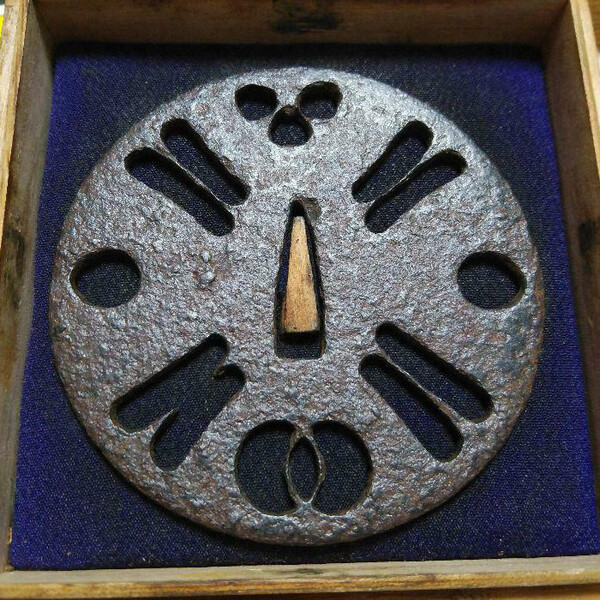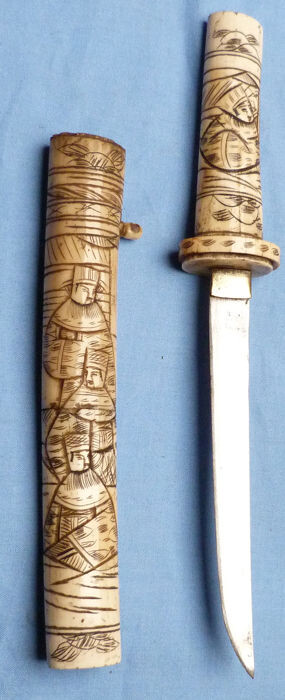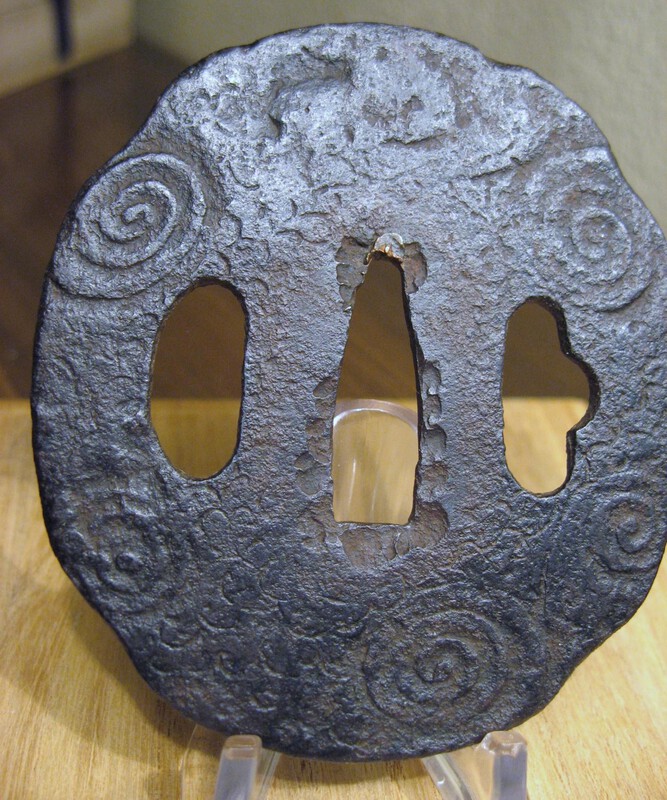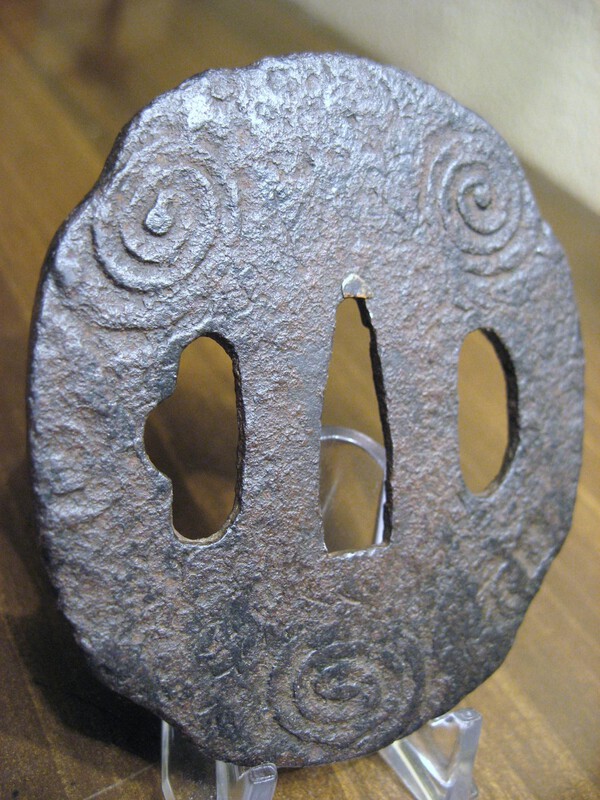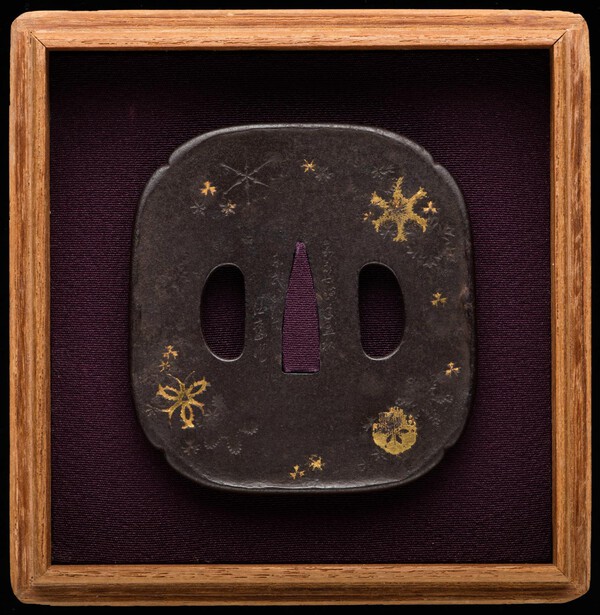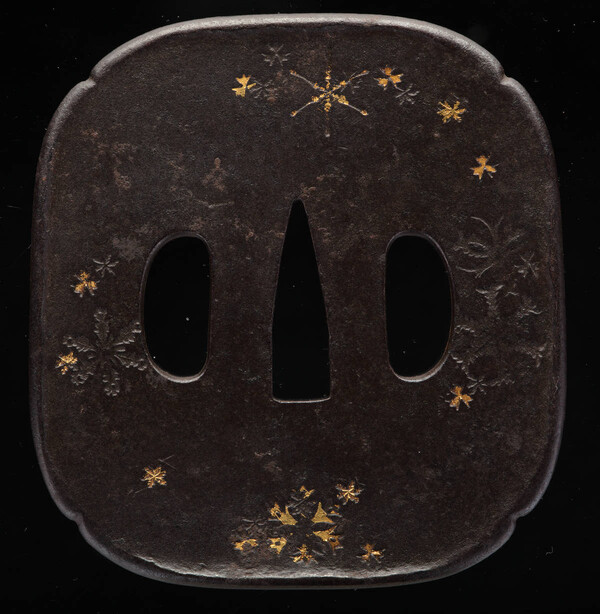Leaderboard
Popular Content
Showing content with the highest reputation on 08/05/2020 in all areas
-
All Guys and Gals, Sword Freaks and Geeks - Please send out good thoughts, vibes, wishes, etc. today for good success with Brian's surgery. Hope he has a successful surgery and pain relief with quick recovery. Rich6 points
-
This one is quite short, from memory maybe 12-14 inches from end to end. No koshirae or shirasaya, just the gold/yellow fuchi you see in the picture and the copper(?) habaki. No hamon that I recall, but then again I didn't know what that was last time I saw it. Unfortunately this may be the worst condition of any blade in the collection, so if it's the oldest / most interesting, shame on us 😕 I'll get more shots of it next time I'm in front of it. If memory serves (we were last together over the July 4th holiday and all had a look at the collection), there were a total of 5 blades in the collection. I was so excited (and clueless) at the time that I didn't get proper pictures of all of them. Next time I visit I'll make it a point to be much more thorough. I've also done quite a bit of reading on how to properly handle and care for these sorts of things, so I'll educate my family on the subject to the extent that I can. I've learned so much over the last month of research, and I'm extremely grateful to all the resources available on this forum. Thank you all!3 points
-
Nope, it was only detectabe after the partialy split saya was opened up for regluing, and was then scraped out with craft blades and small jewellers files. NB, never ever let abrasive papers or cloths anywhere near saya or tsuka, use blades and files only.3 points
-
Navy officer sword is 後藤廣正 Gotō Hiromasa Other sword is old. Looks to be centuries old (and possibly repurposed for the war). 備州長船囗囗 Bishū Osafune ?? Bishū is the name of a province in old Japan, corresponding roughly with present-day Okayama prefecture. Osafune is the name of a famous sword-producing region in Bishū province. The two names (Bishū Osafune) are often found together on swords. Many well-regarded smiths come from this region. Some more close-ups of that area of the tang might help us make out the actual name of the smith. Pictures of the whole sword would probably tell us more. Forgeries are common, so there is no guarantee the name on your sword is genuine, however it does look like an old tang and old signature.3 points
-
Not picking sides, but I learn from these discussions. I don't use auction sites, unless there is guarantees, and restrict my purchases to people I trust, and preferably look at the goods in the hand.3 points
-
In the chaos of closing on a new house, packing, cleaning, showing and working through the sale of my current residence I found myself a nice treat. A beautiful blend of Soshu and Yamato as well as a splendid peach tree(my favorite motif along with plum) koshirae as icing ontop. Strong correlation to Etchu Norishige and Yamato Shizu Kaneuji places it in early nanbokucho/late kamakura. Special thanks and big thank you to Ray. http://swordsofjapan.com/project/ko-uda-in-koshirae/ https://nihontoclub.com/smiths/NOR312 https://nihontoclub.com/smiths/KAN4162 points
-
Sorry, not sword-related, but on a manju netsuke and a part of a smoking set. I have been strugling with this signature for quite some time now and hoped someone might be kind to help. It looks rather complicated for a chinese fake and with reasonably decent calligraphy and even with a kakihan, but I can't crack even one of the kanji no matter what references I use. Is it legible at all? Many thanks!2 points
-
That's a much earlier blade that's been cut down but not enough to lose the mei. (Suriage) also Machi okuri (had the habaki later moved up to shorten the sword again.) It's kuniyuki I believe Possibly Kun1898 Takada school 1661-1673 Known for his blades sharpness fujishiro Chu jo Saku Hawleys 15. This is a long shot as I've seen nothing but the Nakago. Tsuba is civilian not gunto. Also could be an earlier kuniyuki need to see the whole blade without the habaki on it. Both sides for sugata.(shape)2 points
-
2 points
-
2 points
-
I get a piece of wood slightly shorter than the tube. I wrap the blade in Saranwrap and tape it to the piece of wood. Then pack the word and blade in the tube. Pad the tube ends after doing empty space with bubble wrap or foam. Seal the end closed.2 points
-
I am shocked at the insults being thrown here. I hope the subscribed version will not allow such people to vent off? This is not enjoyable. Why air your problems on an open forum only to play the victim when you are confronted? It seems that you are the magnet of mis-understanding. Societies, collectors and craftspeople should perhaps think very carefully before interacting with you.2 points
-
Hi All, I use a saya file that was purchased from Namikawa. I wrap a piece if cotton cloth over the end and clean the inside of the liner, you would be amazed at the crap that comes out. Regards2 points
-
Hi everyone, I figured it's time to show the community what has been sitting boxed up for 70+ years. The pics I have are poorly organized, and I forgot to take pictures of the actual blades, but there is certainly some interesting detail captured. Next time I'm near the collection I'll try to take the more of style of pictures I've become accustomed to seeing with nihonto. For now, have a look, and if you happen to know anything specific or interesting about anything you see, I'd be grateful to know! https://imgur.com/a/zSkLM621 point
-
Someone on another thread wanted dimensions of the liner from a Type 95 saya, so I slid one out and posted the measurements. But afterward, I noticed how wet and saturated the ENTIRE liner was! I left it by the floor vent of a room that gets the most A/C air movement for a few days just to dry it out. After drying, I rubbed the inside with folded paper towels and was appalled at the grime that came out. Since then, I've checked 3 other 95 saya. One was ok, the other two had scattered black build-up that I think is the "tanins" (if that is the right word) that can permanently stain the blade! I used course copper-wool to sand that down, and then used folded paper towels to rub the surface down, removing grime and smoothing the surface. I have 4 more to check, but wanted to put this out there. If you are able to easily remove the liners of your gunto, it might be worth checking. I've tried this on my officer gunto, but have been unable to get most of them (only 1 came out) to come out. My dad's Mantetsu liner is locked in like it was glued or something. Dry, but heavy black build-up (before & after) Entire liner soaking wet1 point
-
1 point
-
All blades are identified by their nagasa, Mike, which is the distance from the tip to the machi notch. Without being exact, a tanto is 12 inches (30.5 cm) or less, a wakizashi is between 12-24 inches, & anything longer is a katana. I'm sure someone is going to nit-pick, but this will do for the moment.1 point
-
1 point
-
藤技英義太郎 Fujieda Teruyoshi Tarō (name) 安政五午年 Ansei go uma nen (1858, year of the horse) From Markus Sesko's excellent site: https://markussesko.com/2013/05/13/from-the-life-of-fujieda-taro-teruyoshi/1 point
-
I've tried the reactivation technique JP. Not enough residual glue to make an effective bond. I've got some very strong yellow elastic bands that I use to really hold the two parts together. When the blade is reinserted into the tsuka the outward pressure popped the reactivated glue. I think a careful application of thick glue to outer edges only then press parts together so glue spreads inwards less but outward more, but not too much. Wet cloth to wipe away the over press glue straight away. Leave for at least 7 days under the tight pressure. After all this is just starch based.1 point
-
Hi and Welcome. The tsuba is fake Chinese reproduction. That one came in a set of six different themed ones in a box. I think £19.99 the six The fittings ergo fuchi kashira are also fake I believe with the mei upside down as well. The Nakago seems to have been artificially patinated with no obvious yasureme. The mei looks Chinese to me but I'm no translator so ill leave that to those that are. At this stage I'm going on reproduction 99% sure.1 point
-
1 point
-
Good vibesGood vibesGood vibesGood vibesGood vibesGood vibesGood vibesGood vibesGood vibesGood vibesGood vibesGood vibesGood vibesGood vibesGood vibesGood vibesGood vibesGood vibesGood vibesGood vibesGood vibesGood vibesGood vibesGood vibesGood vibesGood vibesGood vibesGood vibesGood vibesGood vibesGood vibesGood vibesGood vibesGood vibesGood vibesGood vibesGood vibesGood vibesGood vibesGood vibesGood vibesGood vibesGood vibesGood vibesGood vibesGood vibesGood vibesGood vibesGood vibesGood vibesGood vibesGood vibesGood vibesGood vibesGood vibesGood vibesGood vibesGood vibesGood vibesGood vibesGood vibesGood vibesGood vibesGood vibesGood vibesGood vibesGood vibesGood vibesGood vibesGood vibesGood vibesGood vibesGood vibesGood vibesGood vibesGood vibesGood vibesGood vibesGood vibesGood vibesGood vibesGood vibesGood vibesGood vibesGood vibesGood vibesGood vibesGood vibesGood vibesGood vibesGood vibesGood vibesGood vibesGood vibesGood vibesGood vibes.... to Brian,1 point
-
Valaric, I don't think it's helpful for you to cast your judgement here. As Brian stated, trades have a right of reply, and this is not the place for others to state their opinions. Regarding my reply that 'a deal is a deal' - that was written in response to Adam's attempt to try to get a better set of menuki to 'top up' the deal. We agreed to a trade of my tanto koshirae, a set of menuki (which he chose) and £300 cash in exchange for his katana koshirae which he had listed for sale. I did not wish to be hustled into providing an upgrade because he had changed his mind on a whim, nor did I wish to be out of pocket for returning his koshirae. There was no mention of an examination period, and when Adam did suggest that there should be a 'one or two day' inspection period it had already been five days since he had received the items from me. As can been seen from his responses on the forum, he is a thoroughly tiresome person, whom I no longer wished to deal with.1 point
-
When repairing some saya I have seen clear evidence of dribbles of rice glue inside, so it had to be fairly moist when used.1 point
-
1 point
-
Bradley, If you're talking about NCO 95s, there is a single screw holding the saya throat in place. Remove the screw and throat and if you're lucky, the liner slide right out. About half of mine came out easily. The stuck ones are often stuck at the top/opening as that is where the majority of the oils get absorbed. I've been able to slide a very thin knife blade between the liner and the saya wall enough to loosen them. Even with that, I've sometimes had to pincer the liner with the knife on one side and a flat screw driver on the other to pry a stubborn ones out. I've had good luck doing it so far. Almost all of my officer saya liners have refused to come out. I've only had success with one and it was a combat saya with leather cover.1 point
-
1 point
-
1 point
-
1 point
-
This is a revised Chapter 46, Ikubi Kissaki Sword, the continued part of chapter 12. Please click the link next to go to this chapter directly. https://studyingjapaneseswords.com/2019/02/10/12part-2-ikubi-kissaki(猪首切先)/ I hope I am writing in the right place, since the Nihonto Message Board looks strange. Message board changed somethig?1 point
-
I think you have the right of it there. It is the Forum that I miss though, there were some good tips and information on Ito-maki. The main site, which I never even looked at before was not the one I was interested in. Sometimes I get very closely focused and miss the bigger picture.1 point
-
Hello everyone, My interest in Nihonto stems from a general historical interest as well as my background in martial arts, and my fairly large collection of high end Japanese kitchen knives, as i am chef by trade. (might be considered sacrilege here but it's true) In my years of collecting blades i have become captivated by the people who make them and the history surrounding them, many of the makers i have knives from have history in making or still do make swords and simply transitioned to knives after WW2 in order to stay in business. Some that make knives today have been around for 700+ years, and i find that fascinating. As far as collecting Nihonto, I am brand new and am looking at starting a collection soon, doing research in the meantime. And this seems to be the perfect place to start, the wealth of knowledge here is astounding. I look forward to learning more and talking to you all, this seems like a wonderful and hugely knowledgeable community of people. Thanks.1 point
-
Hi, 三重県人会 林正弥君 To Mr,HAYASHI Masaya, From association of people from Mie Prefecture.1 point
-
1 point
-
1 point
-
1 point
-
Here is an older tsuba which may fit the category. It is kagami-shi, probably early to mid Muromachi. Its wabi sabi aspects seem more literal than some others posted here, such as the obvious worm eaten mimi, and what seems to be the story of zen enlightenment and transience (culminating with the ox lying peacefully unbound upon the rope which originally confined him.) *this specific stamped die of the ox I've found on two other well known kagami-shi tsuba which are dated 1300's-1400's tentatively. jirwin1 point
-
1 point
-
1 point
-
1 point
-
1 point
-
I didn't lose too much on it, and if nothing else, it still makes for a decent cutter. Since the last pictures I uploaded, Using uchiko powder alone, I managed to reveal the hamon on the omote side (which is very close to the edge), and what looks like the boshi on both sides. On the ura side, the boshi seems to have a break in the hamon (which is to be expected with most of the tip gone), but to my surprise the boshi on the omote side seems intact. If I find it worthwhile, I might upload a few more pictures. Thanks for all the help, everyone1 point
-
The kissaki was snapped off. I showed pictures of the condition I got it in, and the break. Because I was unsure of it's value, and most of the people I've asked had assumed it was trash anyway, I took it upon myself to clean it up a little and start the satsumaage re-shaping process anyway. I figure I can't do any more damage than has already done. So far most people here have said about the same thing, that it is probably not worth trying to save, but if that is in fact the case, there is no harm in my cleaning it up myself to find out for certain. If it is worth sending to a polisher of any kind, then that's what I'll do, but I can't know until I indentify that it is at least a traditionally made blade. When I got it, I assumed there was a chance it was like one of those low-quality ww1 era tanto, i have attached an example of what I mean.1 point
-
1 point
-
Looks like you did some grinding on it to have rounded out the metal. This is normally an absolute DO NOT DO on anything that has even a remote chance of being saved or appreciated for what it is. This tanto, however, is clearly very dead and unlikely to have offered anything up to appreciate long-term. We have care guides in the information section you should check out! Lots to learn and read and see there. Normally, doing anything to mess with the blade beyond a soap and water treatment will get you the stink-eye from the nihonto community. We are conservators at heart, we leave the restoration to the professionals. But its safe to say this tanto is dead and buried so its not a huge loss.1 point
-
1 point
-
Not sure anyone else would agree but, to me, this one--with it's losses--seems to embody sabi at least. A little used up and forlorn, but i think the zougan losses are fortuitously aesthetic. If i were designing a tsuba i might do one with similar "white space" intentionally.1 point
-
1 point
-
I hardly think that enough people commented subsequently to form the opinion that no-one paid attention I suspect that a few hundred may well be reading and re-reading, just not commenting on it. It is something that encourages thought which leads to more thought and more ponderings. Not typing them out doesn't mean they don't exist But the reminder was prudent.1 point






